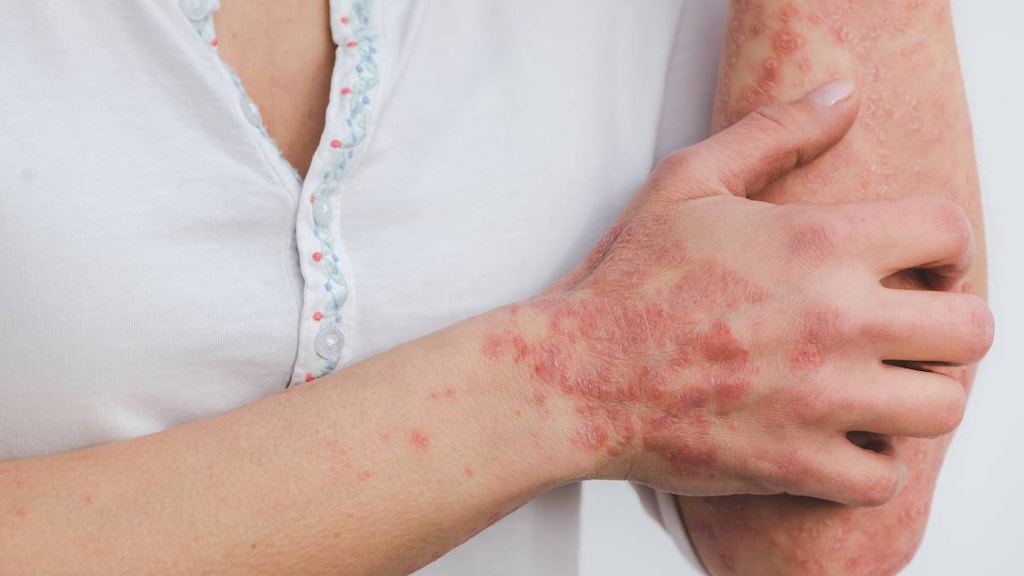What is Lexette?
Lexette is a prescription corticosteroid medicine used on the skin to treat plaque psoriasis in people 12 years of age and older.
It is not known if Lexette is safe and effective in children under 12 years of age.
What is the most important information I should know about Lexette?
Lexette is for use on the skin only. Do not apply Lexette near or in your eyes, mouth, or vagina.
What should I tell my healthcare provider before using Lexette?
Before using Lexette, tell your healthcare provider about all of your medical conditions, including if you:
- have had irritation or other skin reaction to a steroid medicine in the past.
- have a skin infection. You may need medicine to treat the skin infection before using Lexette.
- have diabetes.
- have adrenal gland problems.
- have liver problems.
- plan to have surgery.
- are pregnant or plan to become pregnant. It is not known if Lexette will harm your unborn baby.
- are breastfeeding or plan to breastfeed. It is not known if Lexette passes into your breast milk. If you use Lexette and breastfeed, do not apply Lexette to your nipple or areola to avoid getting Lexette into your baby's mouth.
Tell your healthcare provider about all the medicines you take, including prescription and over-the-counter medicines, vitamins, and herbal supplements. Especially tell your healthcare provider if you take other corticosteroid medicines by mouth, or injection, or use other products on your skin that contain corticosteroid.
How should I use Lexette?
See the "Instructions for use" for detailed information about the right way to apply Lexette.
- Use Lexette exactly as your healthcare provider tells you to use it.
- Apply a thin layer of Lexette to the affected skin areas 2 times each day.
- You should not use more than 50 grams of Lexette in 1 week.
- Avoid using Lexette on your face, underarms (armpits), or groin areas.
- Do not bandage, cover, or wrap the treated skin area unless your healthcare provider tells you to.
- Talk to your healthcare provider if your skin does not improve after 2 weeks of treatment with Lexette.
- Do not use Lexette longer than 2 continuous weeks unless advised to do so by your prescriber.
- Wash your hands after using Lexette unless you are using the medicine to treat your hands.
What should I avoid while using Lexette?
Lexette is flammable. Avoid heat, flame, or smoking during and right after applying Lexette to your skin.
What are the possible side effects of Lexette?
Lexette may cause serious side effects, including:
- Lexette can pass through your skin. Too much Lexette passing through your skin can cause adrenal glands to stop working.
- Cushing's syndrome, a condition that happens when your body is exposed to too much of the hormone cortisol.
- High blood sugar (hyperglycemia).
- Vision problems. Lexette may increase your chance of developing cataract(s) and glaucoma. Tell your healthcare provider if you develop blurred vision or other vision problems during treatment with Lexette.
- Skin reactions at the treated skin site. Tell your healthcare provider if you get any skin reactions or skin infections.
- Effects on growth and weight in children.
Your healthcare provider may do certain blood tests to check for side effects.
The most common side effect of Lexette is mild to moderate pain at the treated site.
These are not all of the possible side effects of Lexette.
Call your doctor for medical advice about side effects. You may report side effects to FDA at 1-800-FDA-1088.
General information about the safe and effective use of Lexette
Medicines are sometimes prescribed for purposes other than those listed in a Patient Information leaflet. Do not use Lexette for a condition for which it was not prescribed. Do not give Lexette to other people, even if they have the same symptoms that you have. It may harm them. You can ask your pharmacist or healthcare provider for information about Lexette that is written for health professionals.
How should I store Lexette?
- Store Lexette at room temperature between 68°F to 77°F (20°C to 25°C).
- Do not puncture or burn Lexette can.
- Do not store Lexette next to heat or store at temperatures above120°F (49°C).
- Do not freeze Lexette.
Keep Lexette and all medicines out of the reach of children.
What are the ingredients in Lexette?
Active ingredient: halobetasol propionate
Inactive ingredients: alcohol (specially denatured alcohol [SDA]), benzoic acid, cetostearyl alcohol, emulsifying wax, polyoxyl 20 cetostearyl ether, propylene glycol, and purified water.
Lexette is dispensed from an aluminum can pressurized with a hydrocarbon propellant containing isobutane and propane.
For more information call: 1-844-825-8500
Instructions for use for Lexette
Read the Patient Information and Instructions for Use before you use Lexette.
Important information: Lexette is for skin use only. Do not get Lexette in your mouth, eyes, or vagina.
Parts of the Lexette can:
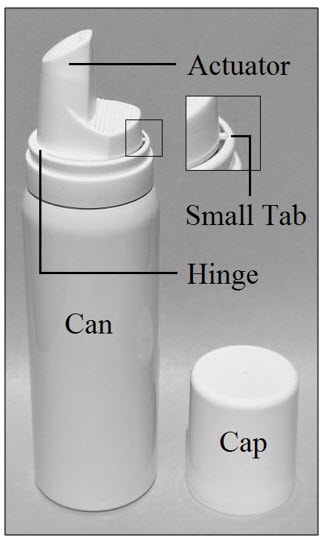
Step 1: Before applying Lexette for the first time, remove cap and break the small tab at the base of the actuator by gently pushing the actuator away from the tab as shown. Do not break the hinge on the actuator.
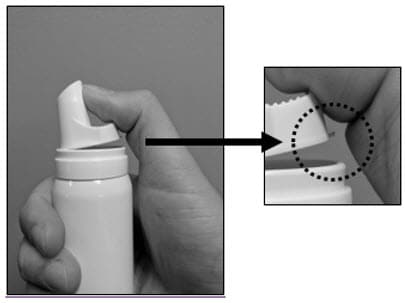
Step 2: Shake the can well before use.
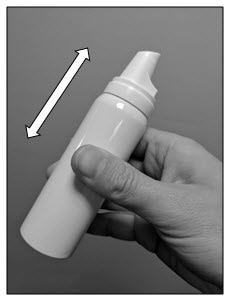
Step 3: Turn the can completely upside down.
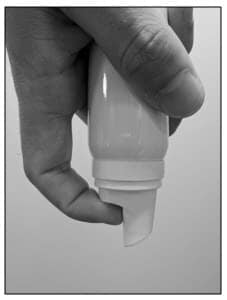
Step 4: Press down on the actuator to dispense a small amount of the foam into the palm of your hand.
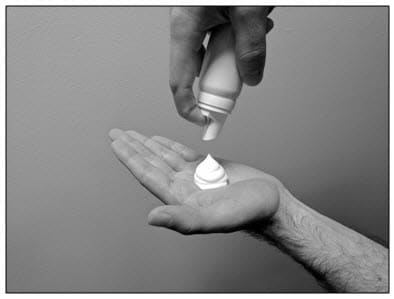
Step 5: Apply a thin layer of Lexette to the affected skin area. Gently rub Lexette into the affected skin until the foam disappears. Repeat Steps 4 and 5 to all the affected areas as prescribed by your healthcare provider.
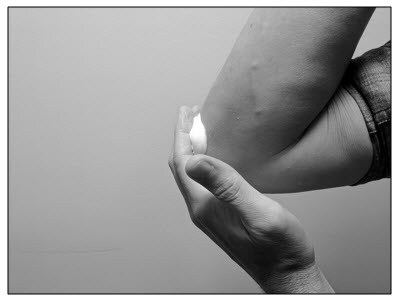
Step 6: After applying Lexette, put the cap back on the can.
Step 7: Wash your hands after applying Lexette unless you are using the medicine to treat your hands.
Instructions for use revised 05/2021.

